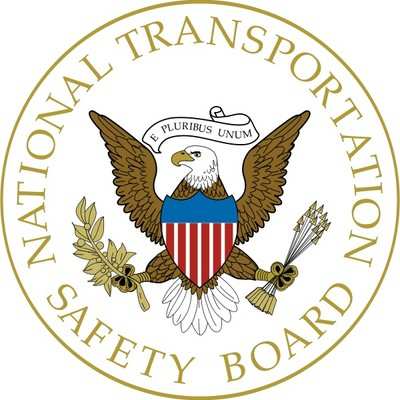Witnesses Saw Gull-Wing Doors On The Aircraft Open During Flight
The NTSB has released a factual report from an accident involving a Lee SQ-2000 experimental airplane that occurred August 28th last year in Pierre, SD. The owner/pilot of the kitplane had recently installed a new engine in the aircraft, and was conducting a test flight and had noted in his records that the doors of the airplane were easy to open during flight. He also noted that the airplane was "very pitch sensitive." The pilot had acquired the airplane in in 2001, and it received its first airworthiness certificate in March, 2004.

According to the report, on August 28, 2012, about 0949 central daylight time, a Lee SQ-2000 experimental airplane, N416, owned and operated by the pilot, was substantially damaged during takeoff from Pierre Regional Airport (KPIR), Pierre, South Dakota. The certificated private pilot was fatally injured. The personal flight was conducted under the provisions of 14 Code of Federal Regulations Part 91. Visual meteorological conditions prevailed during the flight. No flight plan was filed. The local flight was originating at the time of the accident.
On takeoff leg at about 50 feet above the ground, two witnesses observed the left “gull-wing” entrance door to be open and the airplane enter into a series of four up and down pitch oscillations. During the last pitch down oscillation, the airplane impacted the runway at a steep descent angle.
The pilot of N416, age 69, held a private pilot certificate with an airplane single-engine land rating. On October 5, 2011, the pilot was issued a limited third-class medical certificate, with the limitation that corrective lenses be worn while flying. At the time of the medical examination, the pilot reported having 330 hours of flight experience, with 2 hours in the last six months.
The accident airplane was a KLS Composites (Kit), SQ-2000, which the pilot purchased on December 25, 2001. The airplane was issued a special airworthiness certificate on March 18, 2004. During April 2012, the pilot completed the installation of a Continental IO-360C engine. The pilot maintained detailed construction records of the accident airplane, to include construction of the “gull-wing” entrance doors. In these records, the pilot wrote that during flight it was very easy to open the doors and had constructed a door lock “clip” to prevent inadvertent opening of the entrance door closing mechanism. In these records, the pilot also described the aircraft being very pitch sensitive.
At 0953, the KPIR automated weather observation system reported the following weather conditions: Wind 090 degrees at 8 knots; sky clear; temperature 27 degrees Celsius (C); dew point 17 degrees C; altimeter setting 29.93 inches of mercury.
Following impact with the runway, the airplane slid to a stop on the edge of the runway and a postimpact fire ensued. The distance from initial runway impact to the main wreckage location was about 500 feet. During examination, the engine crankshaft was rotated and a compression check was confirmed on all cylinders. Propeller impact with the runway resulted in the shredding of over half of the propeller’s diameter. Flight control surfaces were accounted for, although flight control continuity could not be confirmed due to impact and fire damage. Examination of the airframe, engine and propeller did not reveal any anomalies associated with a preimpact failure or malfunction.
Both “gull-wing” entrance doors separated from the airplane during the impact sequence and were not fire damaged. Examination of the left entrance “gull-wing” door revealed a witness mark corresponding to the door closing mechanism in a “partially closed” position. Extensive fire damage of the fuselage surrounding the left entrance door prevented further analysis of door failure.
On August 30, 2012, an autopsy was performed on the pilot at the Rapid City, South Dakota Regional Hospital. The cause of death was attributed to blunt force injuries. The FAA's Civil Aeromedical Institute in Oklahoma City, Oklahoma, performed toxicology tests on the pilot. No carbon monoxide, cyanide, or drugs were detected in the blood, and no ethanol was detected in vitreous.
 OSH25 Day Four Redux: Spirit SE-1!, H55 eFlyer, King Schools
OSH25 Day Four Redux: Spirit SE-1!, H55 eFlyer, King Schools ANN Thanks Our Speedy Sponsor... Blackshape!!!
ANN Thanks Our Speedy Sponsor... Blackshape!!! Alpha Systems AOA Guides ANN Oshkosh Coverage
Alpha Systems AOA Guides ANN Oshkosh Coverage Pilot Mall Intro's High Flying Models To ANN Sponsor Lineup
Pilot Mall Intro's High Flying Models To ANN Sponsor Lineup CiES Fuels ANN's Oshkosh 2025 Special Event Coverage
CiES Fuels ANN's Oshkosh 2025 Special Event Coverage



